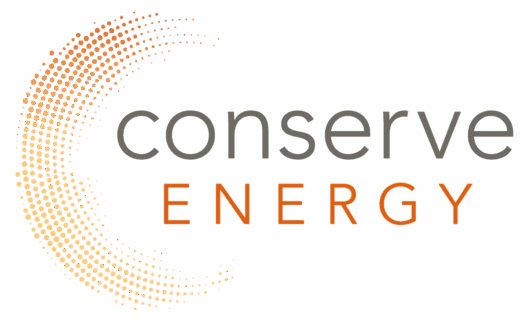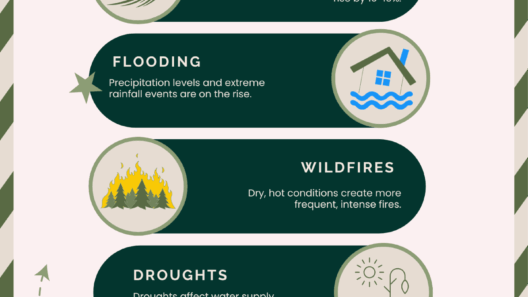Air pollution is an omnipresent challenge that not only threatens public health but also exacerbates the phenomenon of global warming. Various pollutants released into the atmosphere, primarily from industrial activities, vehicular emissions, and agricultural practices, accumulate and significantly alter environmental conditions. Understanding the interplay between air pollution and climate change is essential, as it underscores the necessity for immediate and comprehensive action.
Air pollution encompasses a multitude of harmful substances, including particulate matter (PM), nitrogen oxides (NOx), sulfur dioxide (SO2), volatile organic compounds (VOCs), and carbon dioxide (CO2). Each of these pollutants contributes uniquely to global warming and influences the Earth’s climate system. While some pollutants are transient and can dissipate quickly, others have a much longer lifespan, leading to persistent climatic consequences.
Among these, carbon dioxide is perhaps the most notorious. It exists as a byproduct of burning fossil fuels, which is prevalent in industrial processes, transportation, and energy production. The relationship between CO2 emissions and global warming is well established, as this greenhouse gas traps heat in the atmosphere, leading to an increase in global temperatures. Furthermore, deforestation activities contribute to higher CO2 levels as trees, which absorb carbon dioxide, are cut down.
In addition to CO2, another significant pollutant is methane (CH4), albeit it is often overlooked in discussions about air pollution. Methane is released during the extraction and transportation of fossil fuels, agricultural practices, and waste management. Interestingly, methane has a global warming potential that is over 25 times greater than CO2 in the short term. Its impact results in intensifying weather patterns, such as hurricanes and droughts, which have devastating implications for ecosystems and human societies alike.
Furthermore, nitrous oxide (N2O), primarily emitted from agricultural fertilizers, is another potent greenhouse gas. Although it exists in smaller quantities compared to CO2 and methane, nitrous oxide is approximately 298 times more effective at trapping heat over a 100-year period. Its presence in the atmosphere has contributed significantly to the depletion of the ozone layer, which acts as a protective shield against harmful solar radiation. Without this layer, the ramifications for biodiversity and human health are grave.
Particle pollution is yet another darling of the air quality narrative. It comprises tiny particles suspended in the air that can penetrate deep into the lungs and even enter the bloodstream. While particulate matter is a severe health hazard, its effects on global warming are equally concerning. These particles can influence cloud formation, impacting precipitation patterns and, consequently, the overall climate. Black carbon, a subset of particulate matter derived from incomplete combustion of fossil fuels, is particularly impactful as it can absorb sunlight, further warming the atmosphere.
Contrarily, some air pollution can have a temporary cooling effect on the planet. Aerosols, such as sulfate and organic carbon, scatter sunlight and can lead to a phenomenon known as global dimming. However, this is not a sustainable solution, as the cooling effect is often short-lived and can lead to unpredictable weather patterns. Relying on aerosols to combat global warming is both dangerous and shortsighted, emphasizing the complexity of the air pollution and climate change nexus.
The health implications of air pollution are staggering. Respiratory diseases, cardiovascular problems, and even premature death are all linked to prolonged exposure to polluted air. Vulnerable populations, such as children, the elderly, and those with pre-existing health conditions, are particularly at risk. The consequences extend beyond individual health; they strain healthcare systems and hinder economic productivity, creating a vicious cycle that disproportionately affects lower-income communities.
Moreover, the socio-economic ramifications of air pollution are profound. Businesses face increased operational costs associated with health-related absenteeism, while communities bear the burden of degraded air quality, resulting in reduced property values. Countries grappling with severe air pollution spend substantial amounts on public health initiatives and environmental cleanup, diverting resources from education and infrastructure development. Therefore, addressing air pollution is not merely an environmental obligation; it is a catalyst for economic revitalization.
To mitigate the effects of air pollution on global warming, a multifaceted approach is required. Implementing stricter emissions regulations in industries and promoting cleaner energy alternatives, such as wind and solar power, form the cornerstone of effective policy. Transitioning to adaptive agricultural practices can also alleviate the methane and nitrous oxide emissions from this sector. Furthermore, enhancing public transportation systems to reduce vehicular emissions and promoting research into carbon capture technologies can create a more sustainable future.
Public awareness and education are equally vital components of this equation. Empowering citizens with knowledge about the health impacts and environmental consequences of air pollution can drive demand for cleaner technologies and sustainable practices. Grassroots movements advocating for cleaner air can influence policymakers to prioritize environmental health, driving significant change on local, national, and global scales.
Ultimately, the relationship between air pollution and global warming is inextricable. Resolving this dual crisis requires collective action across various sectors of society. By understanding the intricate connections between the pollutants we emit and the atmospheric changes they induce, we can foster an environment conducive to both human health and the preservation of our planet for future generations. The price of pollution is too high; it is time to take decisive steps towards healing our air and our planet.








